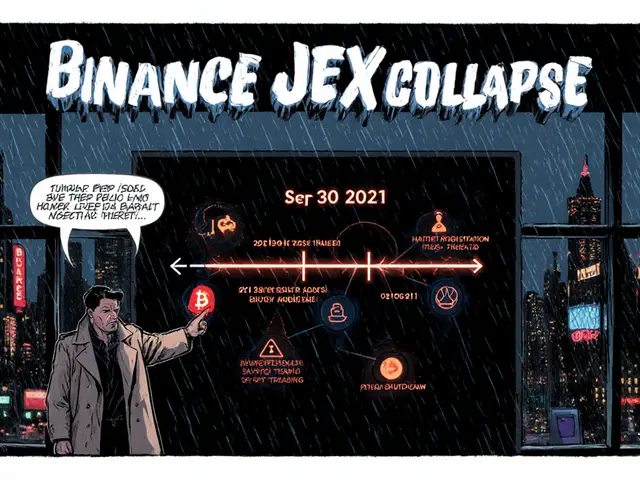Monetary Policy: How It Shapes Crypto Markets and Global Finance
When talking about Monetary Policy, the set of actions a government or central bank takes to control money supply, interest rates, and inflation. Also known as money supply management, it directly influences everything from bank lending to crypto asset prices.
Key players like the Central Bank, the institution that designs and implements monetary policy for a country use tools such as open‑market operations, reserve requirements, and policy rate adjustments to steer the economy. These tools decide how cheap or expensive borrowing becomes, which in turn sets the stage for investors deciding between traditional assets and digital ones.
In the crypto world, Crypto Regulation, the legal framework that governs how digital assets are created, traded, and taxed often mirrors the stance of those same monetary authorities. When a central bank tightens rates, regulators may clamp down on high‑leverage token offerings; looser rates can open the door for more experimental DeFi projects.
Stablecoins like USDC or the Russian A7A5 token act as a bridge between traditional finance and decentralized markets, making them a focal point of both Stablecoin, a cryptocurrency pegged to a stable asset such as a fiat currency policy and broader monetary strategy. Because their value is tied to a fiat benchmark, any shift in that benchmark’s supply or interest rate immediately ripples through the token’s price stability.
Because monetary policy determines the cost of borrowing, it directly shapes Crypto Regulation – higher rates usually tighten capital flows, prompting regulators to clamp down on risky token offerings. At the same time, central banks rely on monetary policy tools like interest‑rate adjustments to control inflation, which in turn affects the demand for stablecoins that promise a low‑volatility alternative to fiat. When governments draft fiscal measures, they must align with monetary goals, creating a feedback loop where fiscal policy and monetary policy constantly interact.
Recent headlines illustrate this dance. Russia’s decision to legalize crypto mining as a sanction‑evasion tactic is essentially a monetary policy move that boosts the use of its A7A5 stablecoin. Iran’s similar strategy leans on local exchanges to bypass external pressure, showing how sovereign monetary choices can reshape crypto corridors. In Africa, Nigeria’s booming peer‑to‑peer platforms thrive because the Central Bank of Nigeria’s monetary stance leaves room for dollar‑denominated crypto trade. Meanwhile, El Salvador’s Bitcoin‑as‑legal‑tender experiment tests how a nation’s monetary framework can co‑exist with a decentralized asset, forcing the International Monetary Fund to weigh fiscal and monetary implications.
Monetary tools also touch everyday crypto activities. Open‑market purchases of government bonds can raise demand for crypto as investors hunt yield, while quantitative easing may inflate crypto prices by flooding the market with liquidity. Staking reward taxes, for example, are calculated against the prevailing interest‑rate environment because the same macro forces influence token inflation rates. Exchange security guidelines now advise firms to consider how sudden policy shifts could trigger mass withdrawals, prompting them to boost cold‑storage reserves and insurance coverage.
On the regulatory front, 2025 sees a wave of stablecoin legislation that directly references central‑bank policy rates to define acceptable reserve‑backing ratios. AML frameworks are being upgraded with AI‑driven analytics that monitor large‑scale money‑supply changes, ensuring that illicit flows can’t hide behind sudden policy‑driven volatility spikes.
Key Takeaways
Monetary policy is the backbone that connects traditional finance, crypto regulation, and stablecoin design. Central banks set the rules; crypto regulators translate them into compliance; stablecoins embody the link; and fiscal policy provides the counterbalance. Understanding this web helps you anticipate market moves, weigh tax implications, and choose exchanges that are prepared for policy‑driven shocks.
Below you’ll find guides, analyses, and deep dives that break down each of these real‑world cases. Whether you need a step‑by‑step look at Russia’s mining law, a quick rundown of Nigeria’s P2P fees, or an assessment of how stablecoin regulations evolve in 2025, the collection covers the practical impact of monetary policy on crypto markets.
Grab the insights that matter, compare the policy angles, and see how the numbers on interest rates or token supplies translate into your next trade or business decision.




